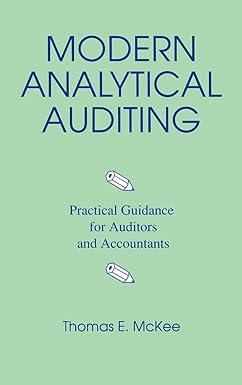Answered step by step
Verified Expert Solution
Question
1 Approved Answer
Use the sample sizes and the number of deviations determined below. Control Procedure Parameters 1 2 3 4 Risk of incorrect acceptance 5 % 5
| Use the sample sizes and the number of deviations determined below. |
| Control Procedure | ||||
| Parameters | 1 | 2 | 3 | 4 |
| Risk of incorrect acceptance | 5 % | 5 % | 10 % | 10 % |
| Tolerable deviation rate | 4 % | 5 % | 7 % | 8 % |
| Expected population deviation rate | 1 % | 2 % | 3 % | 4 % |
| Sample size (using tables) | 156 | 181 | 94 | 98 |
| Sample size (using ACL) | 158 | 184 | 96 | 100 |
| Determine the sample deviation rate, the computed upper deviation rate, and the auditors conclusion (i.e., testing results do or do not support operating effectiveness of the control) for each control procedure. (Leave no cell blank - Be sure to enter "0" if required. Round your rates values to 1 decimal place. Omit the % sign in your response.) |
| Control Procedure | ||||
| Results (Using Table 88 & Table 89 or ACL) | 1 | 2 | 3 | 4 |
| Number of deviations | 0 | 5 | 4 | 3 |
| Sample size | ||||
| Sample deviation rate | % | % | % | % |
| Computed upper deviation rate using Tables | % | % | % | % |
| Upper error limit frequency using ACL | % | % | % | % |
| Auditors conclusion | (Click to select)SupportsDoes not support | (Click to select)Does not supportSupports | (Click to select)Does not supportSupports | (Click to select)SupportsDoes not support |
Step by Step Solution
There are 3 Steps involved in it
Step: 1

Get Instant Access to Expert-Tailored Solutions
See step-by-step solutions with expert insights and AI powered tools for academic success
Step: 2

Step: 3

Ace Your Homework with AI
Get the answers you need in no time with our AI-driven, step-by-step assistance
Get Started


